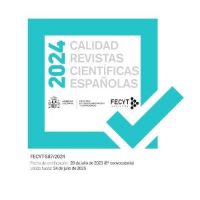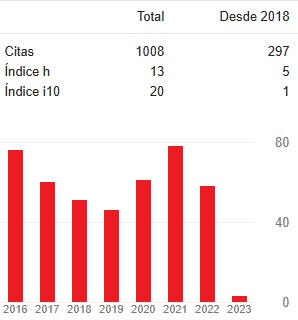1898-1921 1898-1921. LAS REFORMAS MILITARES FALLIDAS: ÁFRICA COMO ESCENARIO DE LA DECADENCIA GEOPOLÍTICA Y MILITAR ESPAÑOLA
DOI:
https://doi.org/10.51743/cih.237Palabras clave:
Desastre de Annual, Reformas militares, Siglo XIX, Reformistas, colonización, Cuba, MarruecosResumen
Las causas del desastre de Annual de 1921, se enraízan con la perdida de las últimas colonias españolas en América en 1898, y los problemas consecuentes para un ejercito anticuado, sobredimensionado en número de oficiales, con materiales obsoletos y presupuestos paupérrimos. Mientras, la intervención de los principales líderes militares en asuntos políticos era continua siendo varios de ellos presidentes del consejo de ministros.
No faltaron los intentos de reforma militar incluso antes de 1898, pero todos resultaron fallidos. Es este aspecto el que tratamos en este artículo, pues no se puede desvincular el desastre de Annual de Cuba, en cuyas guerras se formaron los lideres militares responsables del mismo, varios de ellos – como Silvestre y Berenguer- nacen en Cuba. Tampoco se puede desvincular el citado desastre de el fracaso a la hora de modernizar un ejército que aún mantenía una estructura nacida en la Guerra de la Independencia de 1808
Descargas
Estadísticas globales ℹ️
|
584
Visualizaciones
|
586
Descargas
|
|
1170
Total
|
|
Citas
Alper, M. (1983). Una reforma inocente: Azaña y el Ejército: Studia historica. Historia contemporánea, 1, pp. 31-40.
Andrés-Gallego, J. (1975), La política religiosa en España, 1899-1913, Editora Nacional.
Artehistoria (2021). La reforma militar que nunca existió, España y la gran guerra, Artehistoria. https://www.almendron.com/artehistoria/historia-de-espana/edad-contemporanea/espana-y-la-gran-guerra/la-reforma-militar-que-nunca-existio/ consultado el 17 de junio de 2021.
Baquer, M. A. (1971). El ejército en la sociedad española, Ediciones del Movimiento.
Cachinero, J. (1988). Intervencionismo y reformas militares en España a comienzos del siglo XX: Cuadernos de Historia Contemporánea, 10, Universidad Complutense.
Calvo, G. (1913). España en marruecos (1910-1913). Campaña del Rif en 1911-1912, Barcelona, Casa editorial Maucci.
Cardona, G. (1983). El poder militar en la España contemporánea hasta la Guerra Civil, Siglo XXI de España.
Cardona, G. (1985). La reforma militar que nunca existió: Cuadernos Historia 16, nº 197.
Diario de Sesiones de las Cortes
• Diario de Sesiones del Congreso de los Diputados (DSCD), sesión del martes 19 de mayo de 1914, pág. 743.
• Diario de Sesiones del Congreso de los Diputados (DSCD). Manifiesto de Polavieja. Sesión 10-IX-1898.
Domínguez Martínez Campos, E. (2021). El malestar militar del siglo XIX: Asociación Española de Militares Escritores.
Encinas Gómez, E. (2019). Gobierno Sagasta de abril de 1886, Historia de España. http://www.historiadeespananivelmedio.es/19-24-02-gobierno-sagasta-de-abril-de-1886/, ultima consulta 10 de junio de 2021.
Gaceta de Madrid:
• Proyecto de ley presentado por el sr ministro de la guerra sobre organización y reemplazo del ejército, Gaceta de Madrid, nº 43, de 12/02/1870.
• Gaceta de Madrid, nº 89, de 30 de marzo de 1870.
• Gaceta de Madrid, nº 205, 24 de julio de 1918.
García Moreno, J. F. (1988) Servicio militar en España: Servicio de Publicaciones del EME..
García Polavieja, C. (1898). Relación documentada de mi política en Cuba: Impr. de E. Minuesa.
Guerrero Martín, A. (2017). El impacto de la Gran Guerra en el Ejército español: Revista de Estudios en Seguridad Internacional, 3 (2). DOI: https://doi.org/10.18847/1.6.8
Jiménez Núñez, F., López Coira, M. (1986) Exaltación y eclipse del general Polavieja: Revista de Estudios Políticos (Nueva Época) 54.
La Correspondencia Militar
• (6 de octubre de 1898). Indiferentismo gubernamental. La Correspondencia Militar.
• (6 de marzo de 1899). El ministro de la guerra y el Ejército. La Correspondencia Militar.
• (6 de diciembre de 1900) Los proyectos del ministro de la guerra. La Correspondencia Militar.
• (5 de diciembre de 1901). Weyler en el parlamento. La Correspondencia Militar.
• (19 de junio de 1903). Las reformas de guerra. La Correspondencia Militar.
• (27 de noviembre de 1905) Separatismo criminal... La Correspondencia Militar.
• (24 de febrero de 1906). El conflicto aumenta. La Correspondencia Militar.
• (12 de enero de 1912). Lo más trascendental. La Correspondencia Militar.
• (10 de febrero de 1912). Influencia de la instrucción sobre el valor de las tropas. La Correspondencia Militar.
• (27 de febrero de 1912). Hablamos y hablaremos. La Correspondencia Militar.
• (24 de julio de 1918). Las Reformas Militares. Hay que empezar a plantearlas. La Correspondencia Militar.
• (9 de agosto de 1921). Los sucesos de Melilla. La Correspondencia Militar.
Lezcano, R. (05 de junio de 1980) La ley de Jurisdicciones o razones de un pesimismo. El País.
López-Cordón, M. V. (1976). La revolución de 1868 y la I República. Siglo XXI.
Martínez Hoyos, F. (10 de enero de 2020). ¿Fue Azaña el “triturador” del Ejército?. La Vanguardia.
Moreno Luzón, J. (2011) Romanones: historia de una biografía: Cahiers de civilisation espagnole contemporaine, 8. DOI: https://doi.org/10.4000/ccec.3779
Pando, J. (1999), Historia secreta de Annual. Ediciones Temas de Hoy.
Payne, S. G. (1986), Los militares y la política en la España contemporánea. Sarpe.
Pitarch, J. L. (1980) Réquiem por la ley de Jurisdicciones. El País 24 de mayo.
Prim, J. (17 de febrero de 1870). Proyecto de ley presentado por el Sr. ministro de la Guerra sobre organización y reemplazo del ejército. Boletín oficial de la Provincia de Madrid.
Real Academia de la Historia. José Lopez Dominguez. http://dbe.rah.es/biografias/12324/jose-lopez-dominguez
Sampedro Escolar, J. L. (2020), Biografía de Agustín Luque y Coca: Academia de las Ciencias y las Artes militares. https://acami.es/wp-content/uploads/2020/05/Biograf%C3%ADa-de-Agust%C3%ADn-Luque-y-Coca-web.pdf, consultado el 11 de junio de 2021
Publicado
Cómo citar
Número
Sección
Licencia
La editorial Fundación Universitaria Española conserva los derechos patrimoniales (copyright) de las obras publicadas, y favorece y permite la reutilización de las mismas. Las obras se publican en la edición electrónica de la revista bajo una licencia “ Creative Commons Atribución/Reconocimiento-NoComercial 4.0 Licencia Pública Internacional — CC BY-NC 4.0”, y se pueden copiar, usar, difundir, transmitir y exponer públicamente.
Los autor/es abajo firmantes transfieren parcialmente los derechos de propiedad (copyright) del presente trabajo a la Fundación Universitaria Española (España) (NIF: G28433670), para las ediciones impresas y online.
Se declara además haber respetado los principios éticos de investigación y estar libre de cualquier conflicto de intereses.
«C.I.H» anima a los autores y a la comunidad científica a la máxima promoción y difusión de los trabajos en su versión definitiva a través de:
1) Su lista de contactos (mails) y redes sociales (Facebook, Twitter, LinkedIn…).
2) Repositorio institucional de su Universidad y repositorios públicos (Mendeley, Cosis…).
3) Redes sociales científicas (ResearchGate, Academia.edu, Kudos...).
4) Web personal o institucional, blog, etc.
5) Google Scholar, ORCID, ResearchID, ScopusID, Dimensions, PlumX...
6) Ejemplares impresos adquiridos directamente y enviados a especialistas para su lectura y posterior citación si procede.












2.jpg)
















1.png)
1.png)

1.png)


.png)
.png)

.png)
1.png)
1.png)
